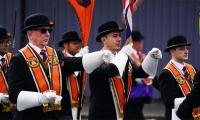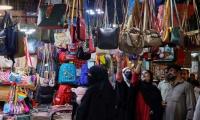with only their vehicles as cover.
As the battle raged as many as 300 volunteers joined the Mehsuds matching the British reinforcements and enabling the tribesmen to keep up their sniping fire through the night before they suddenly disappeared nearly 24 hours after the attack began.
In the days before the ambush the British political agent in South Waziristan had an idea that something bad was about to happen. On April 3 he had picked up reports from informers who described armed tribesmen moving though the tangi. The agent warned the military officers to stop using the route. A plane was then sent to reconnoitre the area and when it reported that no tribal forces were visible, a small convoy was sent through on April 8.
When it completed the journey successfully a decision was taken to send a bigger convoy through on April 9. There is nothing new, it seems, about military officers underestimating the quality of advice they get from civilian officials.
The British lost 53 men against 16 tribesmen killed. The British subsequently named the leader of the ambush Khonia Khel. The stories they circulated about him may have been propaganda but they certainly stuck in the mind. Having been paid, one British account went, by a Wazir from North Waziristan to settle a blood feud, Khonia Khel went to his intended victim’s house and begged protection.
The irresistible demand was granted and then, one day when the adults had left the house, Khonia Khel took two of his host’s small children who were playing near him and beat their brains out. By the time the father returned, Khonia Khel was long gone.
As we examined the evidence of Khonia Khel’s attack the brigadier pointed out some more recent bullet holes mixed in with the old ones.
“These come from 2004”, he explained, “when a Pakistani column was coming through here. We lost 11 men.” It was an engineers’ convoy bringing in heavy equipment and earth moving machinery during the 2004 operation to clear the Taliban from South Waziristan.
So 67 years after the original incident, the Mehsud tribesman had remembered the precise location where they could best mount an attack.
In the British days they were labelled Mohammedan fanatics. Today, they are described as radical Islamists or jihadists. The tribesmen themselves have shown more consistency. Then and now they call themselves nothing more than Mehsuds defending their land.
The parallels don’t end with the remarkable similarity of the 1937 and 2004 attacks.
The post-attack policies were also strikingly similar. In the British case, friendly Mehsuds were rewarded with a contract to move British supplies. Today the Pakistan Army steers development funds to chosen tribal leaders who have the power and authority to call off further attacks.
The obvious parallels beg the obvious question – if the Mehsuds’ descendants attacked the Pakistani army with as much aggression as they once attacked the British is it fair to say the tribesman in 2004 saw the Pakistani soldiers as modern-day colonialists? I put the question to the brigadier.
“How can you say such a thing?” he replied. “These are our brothers.”
The writer is a freelance British journalist, one of the hosts of BBC’s Newshour and the author of the new political thriller, Target Britain.
Email: bennettjones@hotmail.com
Twitter: @OwenBennettJone
When she left venue after addressing rally, large of people came out onto streets to catch glimpse of their great...
Anniversary of her death is not just moment to mourn but time to reflect on what Pakistan lost
This production could reduce carbon emissions by 70-80 per cent compared to conventional jet fuels
She chose to give her life, leaving behind legacy of incredible struggle for democracy
A Pakistani man rests under the shade of trees during a heatwave in Karachi, Pakistan, on June 23, 2015. — AFP The...
Ms Benazir Bhutto had returned to Pakistan with mission of reconciliation in politically and religiously divided country







